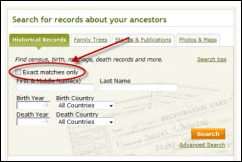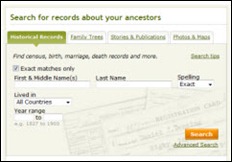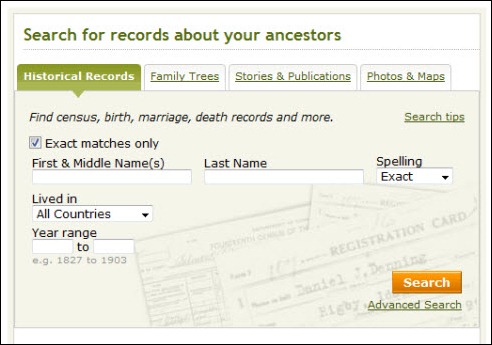Ancestry is probably one of your top go-to databases when conducting general research. For me personally, I like to start by building a family using census records and then move onto vital records. Once I have a pretty good feel for the family structure (including places and time periods), I start to explore a myriad of other sources depending on the place, time period, and the family’s circumstances (i.e., did they own land or rent?).
In order to construct the family structure, I rely on Ancestry’s collection of census images and any indexes or records related to vital statistics. I’ve learned many techniques though trial and error on how to search effectively, and I am pretty successful in finding what I’m looking for. I don’t pretend to be an expert, nor the authority on Ancestry searching, but I thought I would share with you a few of my secrets for successful searches in hopes of helping you find what you are looking for and maybe even remove a brick wall or two.
First Things First
The first thing to note is that I prefer to use the “old search” since I like the way it searches and displays the results. To toggle from new to old (or vice versa), from the Search page, click on the link in the upper right (just under the Ancestry menu bar).

In the “old search” screen, I also mark the checkbox for Exact Matches Only. By doing this, you do not limit yourself from wildcard or Soundex searches, but it does eliminate some of the outlandish results. Once you check the box, the search screen will change slightly. Note: This is for Historical Records (the others, Family Trees, Stories & Publications, and Photos & Maps are not part of the following discussion, but may be covered in future articles).
 |
 |
|
Search Screen With Exact Match Off |
Search Screen With Exact Match On |
Performing a Search
Most of you know how to conduct a basic search, but I want to point out a few things by dissecting the fields in this search screen:

First & Middle Name(s) – Use only one name in this field. Even if the person had a middle name, the likelihood of a record or index item containing both a first and middle name is slim. If the person went by both names, either together or interchangeably, try one first and if you don’t find anything, try the other. More tips on this field coming up.
Last Name – No comments here, as this is pretty straightforward. But lots of strategies are coming up shortly.
Spelling – This drop-down allows you to toggle between and Exact or Soundex search based on whatever you’ve entered in the Last Name field. Note: You cannot use wildcards with the Soundex search turned on.
Lived In – The first drop-down let’s you select a country, and once selected, another drop-down may appear to the right, allowing you to choose another location, such as a state. This is helpful in most searches, but be cautious. Not all records have a place associated with them except for where the record came from or the location could be wrong. For example, in the latter case, a search for George Boone with a location of US and Tennessee did not provide the necessary census records. According to earlier census (by which the information was probably provided by one of his parents), his birth location was Tennessee. Since he was living in Iowa and listed his birth place as North Carolina, this particular search criteria didn’t pick him up. It was only until I simply selected the US and let it default to any state that I was able to locate him in Iowa.
Year Range – I personally leave this blank unless I am looking for an event in a very narrow time period.
See also:

I wish I would have read this two months ago. Thank you so much!